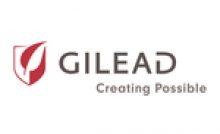Global and China Leading Tier 1 Suppliers’ Intelligent Cockpit Business Research Report 2020 – ResearchAndMarkets.com


DUBLIN–(BUSINESS WIRE)–The “Global and China Leading Tier 1 Suppliers’ Intelligent Cockpit Business Research Report, 2020 (I)” report has been added to ResearchAndMarkets.com’s offering.
The report studies in depth strategies, technologies and products of leading Tier 1 suppliers of intelligent cockpit, and highlights the following:
- (1) strategic plan and business layout of intelligent cockpit
- (2) layout of intelligent cockpit technology centers, R&D centers and production bases
- (3) intelligent cockpit product line, products and technical solutions, typical customers and vehicle models, mass production schedule, etc.
- (4) intelligent cockpit product roadmap and development plan
- (5) suppliers of intelligent cockpit products, technology and modules
The report is segmented into two parts, of which:
- Part 1 with 320 pages in total covers 6 Tier 1 suppliers, i.e., Bosch, Continental, Denso, Valeo, Faurecia and Panasonic.
- Part 2 with 350 pages in total covers 7 Tier 1 suppliers, i.e., Aptiv, Visteon, LG Electronics, Hella, Samsung Harman, Desay SV and Joyson Electronics.
Leading Tier 1 Suppliers’ Cockpit Business Research Report: Eight Development Trends of Intelligent Cockpit
Abstract: in the next two or three years, a range of new intelligent cockpit technologies will be in place and mounted on vehicles, according to the Global and China Leading Tier 1 Suppliers’ Intelligent Cockpit Business Research Report.
High automation faces technical and regulation challenges and it takes a long period of time to build 5G network and roadside infrastructure. In this context, much enthusiasm for intelligent cockpit is being aroused before automated driving technology becomes mature enough. Intelligent cockpits featuring new design concept draw more attention from consumers than automated driving technology does.
Globally, OEMs and Tier 1 suppliers are racing to explore how to launch new intelligent cockpit technologies. The publisher expects that numerous intelligent cockpit products will be launched successively in the upcoming two years or three.
Based on the picture at CES 2020, development trends for intelligent cockpit can be seen below:
(1) Cockpit domain control unit (DCU): next-generation intelligent cockpit systems are DCU-centric and enable features of cockpit electronic systems through a unified software and hardware platform, which incorporate intelligent interaction, intelligent scenarios and personalized services and serve as the foundation for human-vehicle interaction and V2X connectivity.
(2) Multi-display interaction: the cockpit design of dual-display interaction (center console, dashboard), four-display interaction (center console, dashboard, entertainment screen at the copilot’s seat, vehicle control display), or even five-display interaction (center console, dashboard, entertainment screen at the copilot’s seat, vehicle control display, rear seat entertainment display) is trending. Multi-display interaction needs complete cockpit domain architecture, and fusion of technologies, e.g., cockpit DCU, multi-chip (like TI automotive chips and Qualcomm entertainment chip), multiple operating systems (Linux, Android Automotive), Hypervisor virtualization technology, interaction logic, and HMI design. Tier 1 suppliers are required to be more competent in product development and technology integration while seeking business growth amid the rising average selling price (ASP) of intelligent cockpit per vehicle.
(3) Cockpit virtualization technology (separate development of software and hardware): virtual prototyping technology makes design, R&D and test of intelligent vehicles more efficient. Virtualizer Development Kit (VDK) based on virtual prototyping technology enables virtual simulation of electronic control units (ECU), e.g., chips, circuits and components. Automakers can commence development and test of software twelve months ahead of time before the availability of hardware, upgrading physical development to intelligent development in simulation environment. Also, ECUs for virtual simulation can accelerate and extend tests, and simulate various tests in extreme conditions, which is hard to achieve in real and physical circumstances and which secures faster roll-out of safer and more reliable products into market. The virtual prototyping technology is applicable to virtual development and test of all complex electronic systems such as intelligent cockpit and ADAS.
(4) Higher value of cockpit electronics software: the more complex vehicle system software means it makes up ever more of the total cost of a vehicle. OEMs and Tier 1 suppliers are expanding software developers in R&D workforce. Examples include Desay SV, an intelligent cockpit bellwether in China, which boasted about 1,300 software engineers in 2019, a 70% share of its headcount; and Bosch in possession of 30,000 software talents, or 41% of the total staff in 2019 endeavoring to recruit more software developers. Between 2019 and 2020, Bosch set up Bosch China Innovation and Software R&D Center and Bosch Digital Cabin (Shanghai) R&D Center.
(5) Cockpit terminal-cloud integration, T-BOX and V2X as gateway of data from inside and outside vehicle, and cockpit big data as core competitive edge of products: intelligent cockpit will be a combination of terminals and cloud, in which all kinds of service contents, timely information sharing and complex computation will be offered and done over cloud, more than acts as a stand-alone terminal. In future cockpit big data will be the core competitive edge of products, making center console and dashboard, center information display (CID) navigation, T-BOX and air-conditioner controller, integrated.
(6) Evolution of vehicle display from flat rectangular screen to large curved screen: in January 2020, Corning’s high-performance Gorilla cold-rolled glass was first available to GAC Aion LX; in early 2020, Visteon and Corning joined hands to further develop ColdForm technology which will be spawned by Corning for automotive curved display systems; in July 2020, Rightware under Thundersoft, and LG Electronics partnered to develop the industry’s first curved OLED display for 2021 Cadillac Escalade.
(7) Glasses-free 3D display: 3D effect makes eyes capture information more quickly. Bosch, Continental and more all focus on mass production and installation of glasses-free 3D displays in the next two year or three. At CES 2020, Continental showcased its 3D Lightfield display technology which was co-developed with Leia Inc. and mass production is arranged in 2022.
(8) Driver monitoring system (DMS) or interior monitoring system (IMS): IMS based on camera and AI is the core product of Tier 1 suppliers. DMS will play a crucial role in whether a new vehicle model can be rated five stars by Euro NCAP. For example, Continental plans to mass-produce DMS in 2021 and Bosch in 2022.
Key Topics Covered
1. Bosch Intelligent Cockpit Business (50 Pages)
- Bosch’s R&D Expenses and Business Structure
- Distribution of R&D Centers of Bosch Car Multimedia and Software Business in China
- Bosch Digital Cabin (Shanghai) R&D Center’s Layout of Intelligent Cockpit
- Bosch China Innovation and Software R&D Center
- Bosch Cockpit Electronic Product Lines
- Bosch Cockpit DCU Products
- Bosch Cockpit DCU Architecture
- Bosch DCU Planning
- Bosch Intelligent Cockpit to Fuse with Ever More ECUs
- Bosch Multimedia Fusion Control Product System Architecture (I)
- Bosch Multimedia Fusion Control Product System Architecture (II)
- Bosch Multimedia Fusion Control Product System Architecture Roadmap
- Bosch Cockpit System Security Solution
- Bosch Cockpit DCU to Fuse with Automotive Central Computer in Future
- Bosch Planning and Technical Routes for Cockpit DCU Products
- Bosch Center Information Display (CID) and Infotainment Business (I)
- Bosch Center Information Display (CID) and Infotainment Business (II)
- Bosch Full LCD Cluster Business (I)
- Bosch Full LCD Cluster Business (II)
- Bosch Full LCD Cluster Business
- Bosch Priority over Glasses-free 3D Display Technology
- Bosch Digital Rearview Mirror (Mirror Cam System) Business
- Bosch Vehicle Control Screen and NeoSense Haptic Feedback Technologies
- Bosch Planning and Technical Routes for Display Products
- Bosch Intelligent Cockpit Multi-display Interaction Business
- Bosch Cockpit HMI Business Model
- Bosch Cockpit HMI Business Planning
- V2X Products of Bosch
- Partners of Bosch V2X Products
- Bosch V2X Product Testing Project of Bosch
- Auto Parking Technology Roadmap of Bosch
- L2 Auto Parking Solution of Bosch
- L3/L4 Auto Parking Solution of Bosch
- L5 Auto Parking Solution of Bosch
- Bosch Current Featured AVP Solution for Parking Field
- Bosch DMS Business (I)
- Bosch DMS Business (II)
- Bosch DMS Software Algorithm Partner (I)
- Bosch DMS Software Algorithm Partner (II)
- Bosch DMS Software Algorithm Partner (III)
- Bosch Cloud-based Battery Management System (I)
- Bosch Cloud-based Battery Management System (II)
- Bosch OTA/FOTA Technology Solution (I)
- Bosch OTA/FOTA Security Control Strategy (II)
- Bosch Together with FAW Jiefang to Roll out First FOTA Update Solution for Commercial Vehicle in China
- FOTA Technology Strategy of Bosch
- Summary (I) of Bosch Cockpit Products, Suppliers and Customers
- Summary (II) of Bosch Cockpit Products, Suppliers and Customers
- Core Team of Bosch China
- Core Team of Bosch Multimedia
- Distribution of Bosch Multimedia’s Production Bases in China
2. Cockpit Business of Continental (57 Pages)
3. Denso Cockpit Business (48 Pages)
4. Valeo Cockpit Business (53 Pages)
5. Faurecia Cockpit Business (63 Pages)
6. Panasonic Cockpit Business (48 Pages)
For more information about this report visit https://www.researchandmarkets.com/r/kmjs1y
Contacts
ResearchAndMarkets.com
Laura Wood, Senior Press Manager
press@researchandmarkets.com
For E.S.T Office Hours Call 1-917-300-0470
For U.S./CAN Toll Free Call 1-800-526-8630
For GMT Office Hours Call +353-1-416-8900
Recent Posts
FBS Enhances Local Rescue Capabilities in Thailand with Critical Equipment Donation
BANGKOK, THAILAND – Media OutReach Newswire – 15 April 2025 - In response to the…
Art Director Syou Nam Thai Brings Future Climate Realities to Life in Homing Instinct Installation at Woodstock Film Festival
Art director Syou Nam Thai has recently garnered attention for his pivotal role in the…
Natural Diamonds Light Up Star-studded Red Carpet 2025
HONG KONG SAR - Media OutReach Newswire - 15 April 2025 - As the 2025…
In record time: Octa broker on how speed inspires trust
KUALA LUMPUR, MALAYSIA - Media OutReach Newswire - 15 April 2025 - In online trading,…
Rack Centre’s LGS2 12MW Data Centre, gamechanger to revolutionise Nigeria’s Digital Landscape
LAGOS, NIGERIA - EQS Newswire - 15 April 2025 - The newly commissioned LGS2 12MW…
2023 VinFuture Special Prize Laureate Prof. Daniel Drucker: Ample room remains for innovation in GLP-1 therapies
HANOI, VIETNAM - Media OutReach Neswire - 14 April 2025 - Together with world-renowned scientists…


